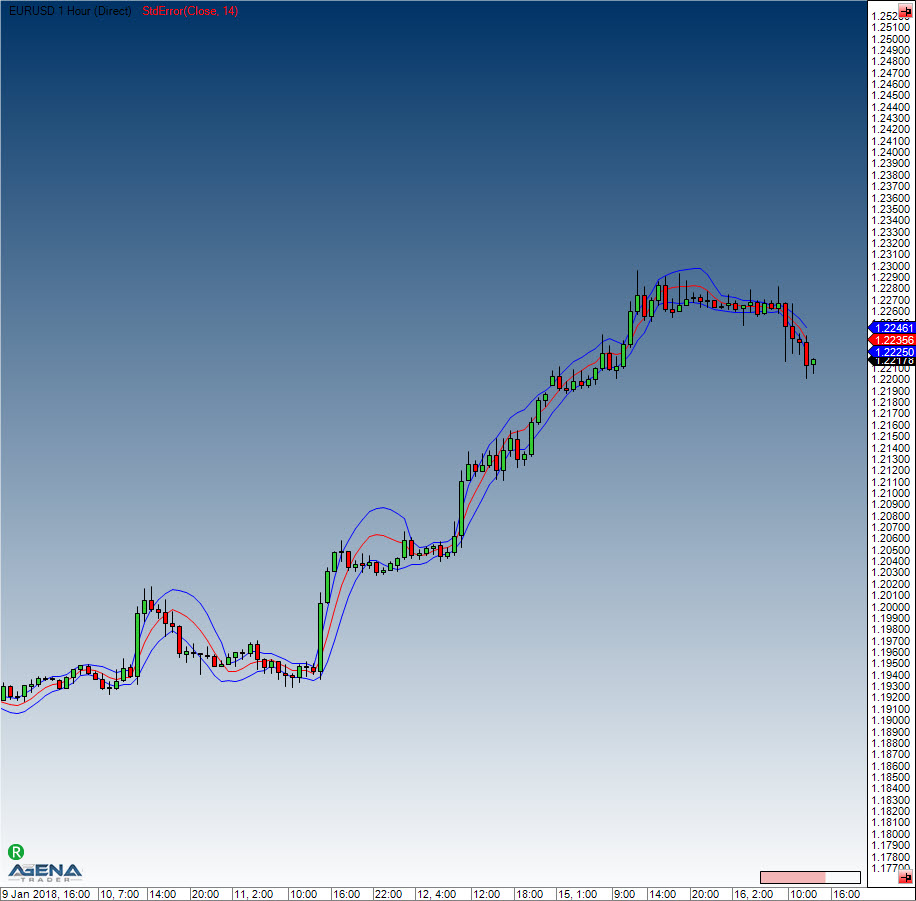Standard Error (StdError)
Description
Jon Anderson came up with the Standard Error Bands, which are similar to the Bollinger Bands, but with a different calculation. An upper and a lower boundary around a middle line create the bands – this is also known as the linear regression. The lower standard error band results from the subtraction of two standard errors from the final value of the regression line. Because individual closing prices can have a huge influence on the values of the bands, it is necessary to use a Simple Moving Average to smooth the data.
Interpretation
One of the applications of the standard error bands is the tightening of the bands when prices rise/fall. If the bands tighten, it signifies that a trend is currently in place. A strong trend will continue to tighten the bands.
Further information
http://www.forexrealm.com/technical-analysis/technical-indicators/standard-error-bands.html
Usage
StdError(int period)
StdError(IDataSeries inSeries, int period)
StdError(int period)[int barsAgo]
StdError(IDataSeries inSeries, int period)[int barsAgo]
//Upper band
StdError(int period).Upper[int barsAgo]
StdError(IDataSeries inSeries, int period).Upper[int barsAgo]
//Lower band
StdError(int period).Lower[int barsAgo]
StdError(IDataSeries inSeries, int period).Lower[int barsAgo]Return value
double
When using this method with an index (e.g. StdError(21)[int barsAgo] ), the value of the indicator will be issued for the referenced bar.
Parameters
inSeries Input data series for the indicator
period Number of bars included in the calculations
Visualization

Example
Last updated